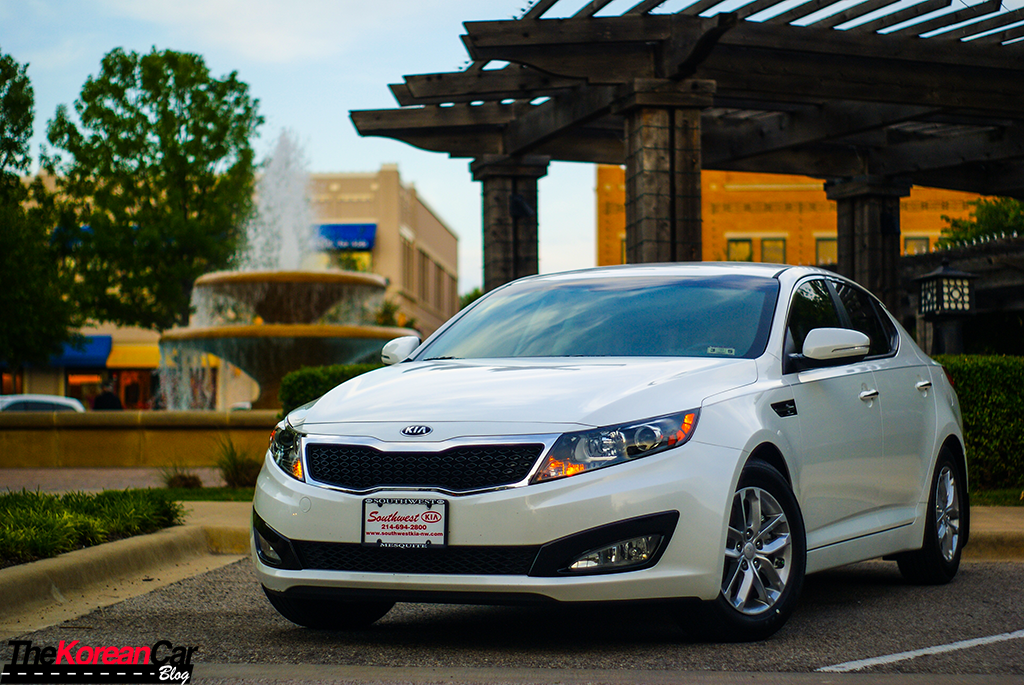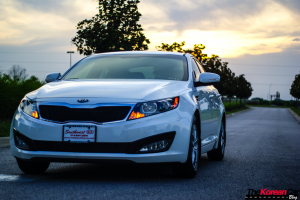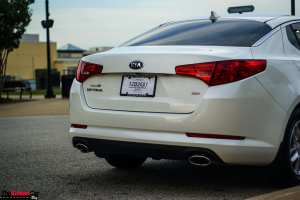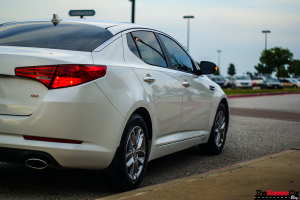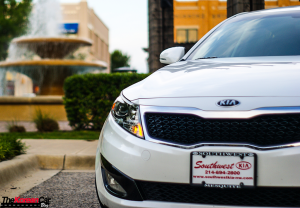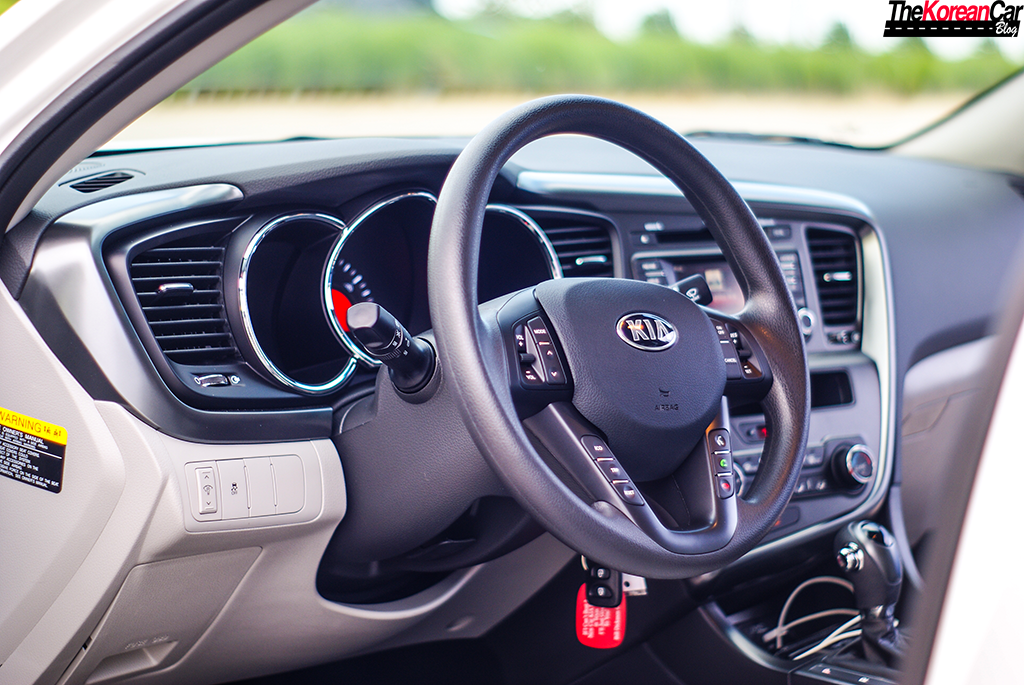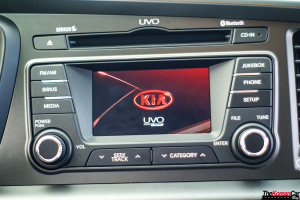- Kia Optima III (facelift 2013) 2.0 T-GDI Automatic (278 л.с., бензин, 2013) — Технические данные, характеристики
- Марка, серия, модель, годы выпуска
- Основная информация о производителе, серии и модели автомобиля. Данные о годах его выпуска.
- Вид кузова, размеры, объемы, масса
- Информация о кузове автомобиля, его размерах, массе, объеме багажника и объеме топливного бака.
- Двигатель
- Технические данные о двигателе автомобиля — расположение, объем, способ наполнения цилиндра, количество цилиндров, клапаны, степень сжатия, топливо и т.д.
- Мощность, крутящий момент, разгон, скорость
- Информация о максимальной мощности, максимальной крутящей моменте и оборотов в минуту, на которых они достигаются. Разгон с 0 до 100 км/ч. Максимальная скорость.
- Расход топлива
- Информация о росходе топлива в городе и на трассе (городских и загородных цикл). Смешанный расход топлива.
- Коробка передач, система привода
- Информация о коробке передач (автоматическая и/или механическая), количестве передач и системе привода автомобиля.
- Рулевой механизм
- Технические данные о рулевом механизме и о диаметре поворота автомобиля.
- Подвеска
- Информация о передней и задней подвеске автомобиля.
- Тормоза
- Вид тормозов передних и задних колес, данные о наличии ABS (анти-блокирующей системы).
- Диски и шины
- Тип и размер дисков и шин автомобиля.
- Сравнение со средними значениями
- Разнице в процентном соотношении между значениями некоторых характеристик автомобиля и их средними значениями.
- Review: 2013 Kia Optima 2.4 GDi 201 hp EX
Kia Optima III (facelift 2013) 2.0 T-GDI Automatic (278 л.с., бензин, 2013) — Технические данные, характеристики
седан, количество дверей: 4, количество мест: 5, размеры: 4845.00 мм x 1830.00 мм x 1455.00 мм, масса: 1573 кг, объем двигателя: 1998 см 3 , два распределительных вала в головке блока цилиндров (DOHC), количество цилиндров: 4, клапанов на цилиндр: 4, максимальная мощность: 278 л.с. @ 6000 об/мин, максимальной крутящий момент: 365 Нм @ 1750 — 4500 об/мин, передачи (механические/автоматические): — / 6, вид топливо: бензин, диски: 7.5J × 18, шины: 225/45 R18
Марка, серия, модель, годы выпуска
Основная информация о производителе, серии и модели автомобиля. Данные о годах его выпуска.
| Марка | Kia |
| Серия | Optima |
| Модель | III (facelift 2013) 2.0 T-GDI Automatic |
| Первый год выпуска | 2013 |
| Последний год выпуска | 2015 |
Вид кузова, размеры, объемы, масса
Информация о кузове автомобиля, его размерах, массе, объеме багажника и объеме топливного бака.
| Тип кузова | седан |
| Количество дверей | 4 (четыре) |
| Количество мест | 5 (пять) |
| Колесная база | 2795.00 мм (миллиметров) 9.17 ft (фуов) 110.04 in (дюймов) 2.7950 м (метров) |
| Колея передняя | 1595.00 мм (миллиметров) 5.23 ft (фуов) 62.80 in (дюймов) 1.5950 м (метров) |
| Колея задняя | 1595.00 мм (миллиметров) 5.23 ft (фуов) 62.80 in (дюймов) 1.5950 м (метров) |
| Длина | 4845.00 мм (миллиметров) 15.90 ft (фуов) 190.75 in (дюймов) 4.8450 м (метров) |
| Ширина | 1830.00 мм (миллиметров) 6.00 ft (фуов) 72.05 in (дюймов) 1.8300 м (метров) |
| Высота | 1455.00 мм (миллиметров) 4.77 ft (фуов) 57.28 in (дюймов) 1.4550 м (метров) |
| Минималный объём багажника | 436.0 л (литров) 15.40 ft 3 (кубических футов) 0.44 м 3 (кубических метров) 436000.00 см 3 (кубических сантиметров) |
| Максимальный объём багажника | — |
| Снаряжённая масса | 1573 кг (килограммов) 3467.87 lbs (фунтов) |
| Максимальная масса | — |
| Объём топливного бака | 70.0 л (литров) 15.40 имп.гал. (имперских галлонов) 18.49 ам.гал. (американских галлонов) |
Двигатель
Технические данные о двигателе автомобиля — расположение, объем, способ наполнения цилиндра, количество цилиндров, клапаны, степень сжатия, топливо и т.д.
| Тип топливо | бензин |
| Тип системы подачи топлива | непосредственный впрыск/прямой впрыск |
| Расположение двигателя | спереди, поперечно |
| Объём двигателя | 1998 см 3 (кубических сантиметров) |
| Газораспределительный механизм | два распределительных вала в головке блока цилиндров (DOHC) |
| Наддув | турбо |
| Степень сжатия | 9.50 : 1 |
| Расположение цилиндров | рядное |
| Количество цилиндров | 4 (четыре) |
| Количество клапанов на цилиндр | 4 (четыре) |
| Диаметр цилиндра | 86.00 мм (миллиметров) 0.28 ft (фуов) 3.39 in (дюймов) 0.0860 м (метров) |
| Ход поршня | 86.00 мм (миллиметров) 0.28 ft (фуов) 3.39 in (дюймов) 0.0860 м (метров) |
Мощность, крутящий момент, разгон, скорость
Информация о максимальной мощности, максимальной крутящей моменте и оборотов в минуту, на которых они достигаются. Разгон с 0 до 100 км/ч. Максимальная скорость.
| Максимальная мощность | 278 л.с. (английских лошадиных сил) 207.3 кВт (киловаттов) 281.9 л.с. (метрических лошадиных сил) |
| Mаксимальная мощность достигается при | 6000 об/мин (оборотов в минуту) |
| Максимальный крутящий момент | 365 Нм (Ньютон-метров) 37.2 кгм (килограмм-сила-метров) 269.2 фунт/фут (фунто-футов) |
| Максимальный крутящий момент достигается при | 1750 — 4500 об/мин (оборотов в минуту) |
| Разгон с 0 до 100 км/ч | — |
| Максималная скорость | — |
| Коэффициент аэродинамического сопротивления | 0.285 |
Расход топлива
Информация о росходе топлива в городе и на трассе (городских и загородных цикл). Смешанный расход топлива.
Коробка передач, система привода
Информация о коробке передач (автоматическая и/или механическая), количестве передач и системе привода автомобиля.
Рулевой механизм
Технические данные о рулевом механизме и о диаметре поворота автомобиля.
| Рулевой механизм | шестерня-рейка (реечная передача) |
| Сервопривод | — |
| Диаметр поворота | 11.20 м (метров) 36.75 ft (фуов) 440.94 in (дюймов) |
Подвеска
Информация о передней и задней подвеске автомобиля.
| Передняя подвеска | — индивидуальная/независимая подвеска — на винтовых пружинах — подвеска МакФерсона — стабилизатор поперечной устойчивости |
| Задняя подвеска | — блокированная/зависимая подвеска — на винтовых пружинах — подвеска МакФерсона — стабилизатор поперечной устойчивости |
Тормоза
Вид тормозов передних и задних колес, данные о наличии ABS (анти-блокирующей системы).
Диски и шины
Тип и размер дисков и шин автомобиля.
Сравнение со средними значениями
Разнице в процентном соотношении между значениями некоторых характеристик автомобиля и их средними значениями.
| Колесная база | + 5% |
| Колея передняя | + 6% |
| Колея задняя | + 6% |
| Длина | + 8% |
| Ширина | + 3% |
| Высота | — 3% |
| Минималный объём багажника | — 3% |
| Снаряжённая масса | + 10% |
| Объём топливного бака | + 14% |
| Объём двигателя | — 11% |
| Максимальная мощность | + 75% |
| Максимальный крутящий момент | + 38% |
| Коэффициент аэродинамического сопротивления | — 11% |
Технические данные об автомобилях, как и любая другая информация на этом сайте, предоставляется вам «как есть» и публикуется только с ознакомительной целью. Она собрана из общественно доступных источников и предоставлена третьими странами, поэтому thecaryoudrive.com не может и не гарантирует ее точность и полноту. Использование сайта как источник информации Вы осуществляете полностью на свой собственный риск. Все торговые марки и логотипы производителей автомобилей являются собственностью их соответствующих владельцев.
Review: 2013 Kia Optima 2.4 GDi 201 hp EX
Honestly, it was not easy to make a review of the car I call Kia’s revolutionary car, the Optima . Debuted at the 2010 New York Motor Show, we had many opportunities to test drive but it didn’t work, Erick was lucky to test drive and make a great photo report, but then his SD card got corrupted and lost all the photoshot.
[ads style=”float:left;padding:1px;”]
After that, I worked for Kia’s Local Dealer and I had the opportunity to test drive around 400 km (european version with 1.7 diesel engine). It was awesome, but my job left me no time to do a photoshot. (In Europe, particularity in Spain the Optima is difficult to see one). Finally and thanks to our friend Ozzie that bought one, the 2013 2.4 GDi 201 hp EX version, we’ve had the chance to make a good test drive and take some good pictures!. Kia please I hope you read this article and give us more opportunities to test drive latest Kia models.
In the past, Korean cars were seen as dowdy, perceived as unimaginative and subject to the more than odd derogatory comment in passing, then surely whatever is transpiring before our eyes is, quite simply, nothing short of a revelation. Revolution, even. Granted, it has certainly taken time for things to kick in, but you only have to look at the past two years and see how rapid things are coming on line, where the slew of offerings coming about have, one after another, sought to not just placate, but accomplish something far more radical – how about excite for a suitable adjective?
The likes of the new Sorento, Sportage and Optima – all displaying the new design language set about by Peter Schreyer – are the next wave, set to capitalise on this little foothold on the beach. It is with the Optima that our story unfolds here, and what a neat little tale it has turned out to be indeed. It certainly wasn’t like that in the beginning, a decade ago. The original Optima, essentially a rebadged Hyundai Sonata, could hardly be called exciting; as a Jag rip-off, it wasn’t too bad, but on the whole felt like a bit like soggy toast.
The next one that came along, the second-generation, which arrived five years later, proved a far better proposition, and after its mid-life facelift, where Schreyer gave the car a new face, it even started to look like it was getting serious about things. In truth, the Optima was a proper car, proper being that it drove fairly well and displayed all the necessary and appropriate manners for a sedan. In all, the vehicle was hardly a poor offering, but it wasn’t eye-catchingly good, and it never had quite enough panache to catch consumers’ attention.
Third time should be the charm. Designed from a clean slate at Kia’s studios in Frankfurt, Germany and Irvine, California, Schreyer and his team have come up with what really is a stunning looking car in their interpretation of the TF, which is longer, wider and lower than the one it has replaced. The 2013 Kia Optima sedan is one of the sportiest, most stylish mid-size sedans out there. We’d even put it up against the styling of some $40,000 European luxury brands. If the new Sonata is all about verve, and fluidly so, then the Optima plays a suitable counterfoil, its muscularity and boldness simply fetching. The grand thing is that it’s never once shouty.
Yes, you’ll find hints of the familiar – the rear lamp assy of the A4, the front shoulder of the E60 5er and a rather Saab-ish rear upper deck, but the entire amalgamation of lines hangs together so organically the profile just works.It looks simplistic upon initial glance, all that contouring, but you have to admire the complete manner in which the lines are so fully resolved on this one, and it takes a moment beyond the first few glimpses to realise that – witness the sculpturing from the C-pillar back on to the tail and you’ll get an idea of how the complex seems simple.
It’s quite the achievement, really, and this is a shape that will arguably have better appeal retention over a long haul than something which is dramatic and full of flourish. Schreyer says that this car looks better each time you clap eyes on it, and I’d have to say he’s spot on that dot. The 2.4 litre gasoline direct injection block offers 198 hp at 6,300 rpm and a maximum torque of 250 Nm at 4,250 rpm (an extra 20hp and 21Nm over what’s on the MPi 2.4 litre block), working with a six-speed automatic transmission.
An Active ECO system button reoptimises the ECU and transmission control unit as well as the AC’s compressor to offer better fuel economy – the company claims up to 9% improvement can be had. Performance specs include a 0-100kph time of 9.0 seconds, and a 210 kph top speed. Equally as smooth and quiet as the 2.4-liter engine, the 2.0 Turbo pumps out 274 horsepower, but is mated to the same 6-speed Sportmatic manually-shifting automatic transmission.
[ads style=”float:left;padding:1px;”]The 2013 Kia Optima sedan doesn’t offer the option of a V6, and why should it? The standard 2.4-liter Theta II 4-cylinder is nearly as powerful as some V6 engines and gets far better fuel economy. In fact, it has more power and better fuel economy than many other 4-cylinder cars in the category, as well. Those wanting more power can opt for the T-GDi 2.0 liter (SX trims only). Only one transmission is offered: A 6-speed Sportronic automatic with manual-shift mode. The Optima Hybrid uses the 2.4-liter engine mated to a 40-horsepower electric motor for a combined output of 206 horsepower.
The Optima responds to thug-like behaviour quite splendidly. It’s not an all-out bruiser in this regard, for sure, but the front/rear unity is solid, and the car tracks cleanly when pushed, never wavering or hesitant in the middle of things, with no fuss in the follow through. Nicely integrated, and very well sorted, there is everything to suggest that it is now the definitive form in handling (with this particular tune level), easily more than a measure for the Honda Accord, which has been the class-leading performer in that area for the segment over here.
The famous automotive leader Bob Lutz once said it costs as much to build an ugly car as it does a beautiful one. In the 2013 Kia Optima sedan, Mr. Lutz’s words have been proven spot on. Costing no more than a comparably-equipped Toyota Camry or Honda Accord, the Optima for 2013 outshines its competition with stunning good looks, compact car-like fuel economy, a great warranty and ever-improving resale figures. Add to the mix a panoramic sunroof and heated and cooling seats, and the Optima might appear to be the bargain of the century. Models range from the well-equipped entry LX to the luxurious EX to the fuel-efficient Hybrid . There’s even a high-performance turbo model that will shame some premium brands costing tens of thousands more.
